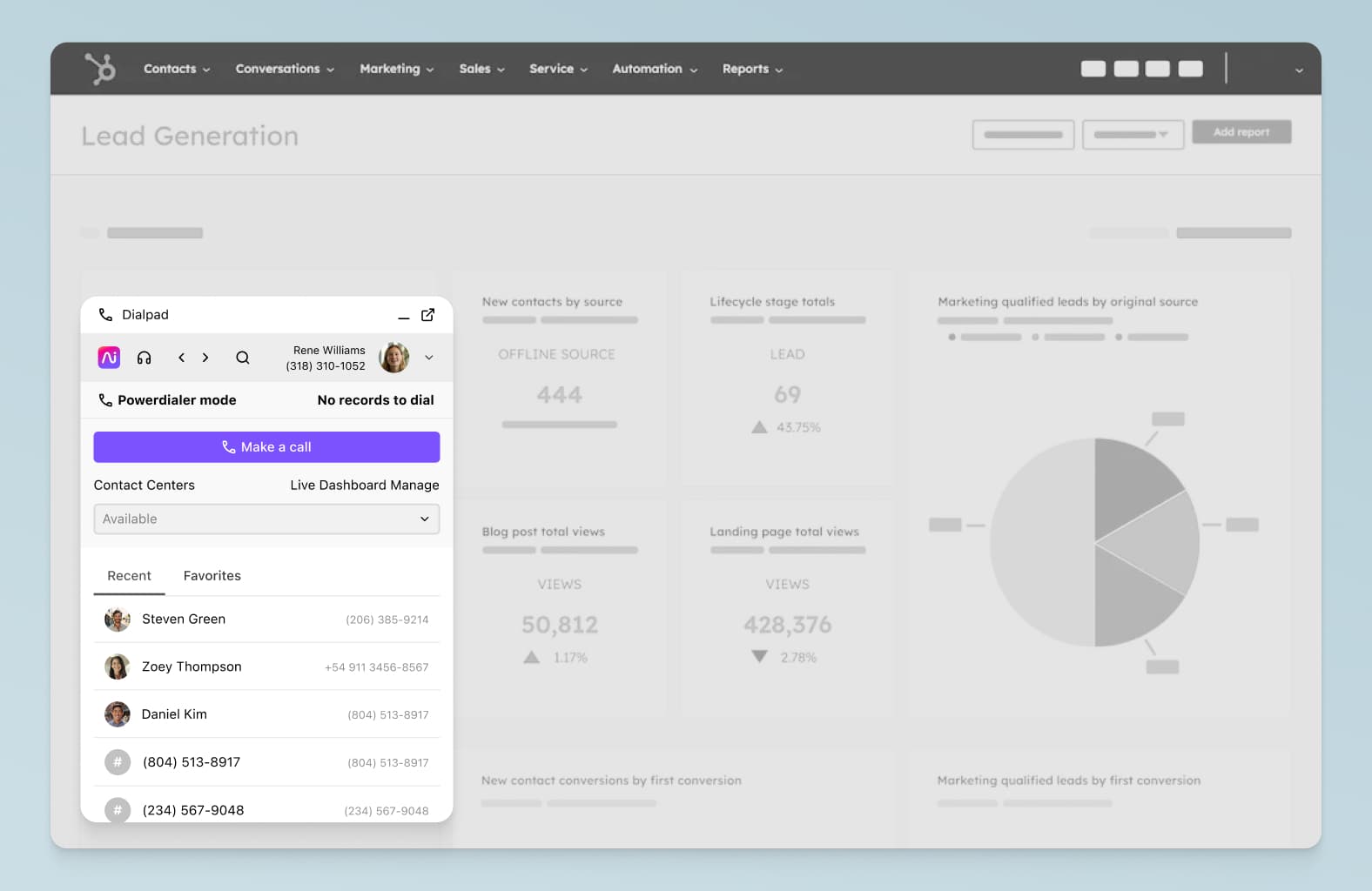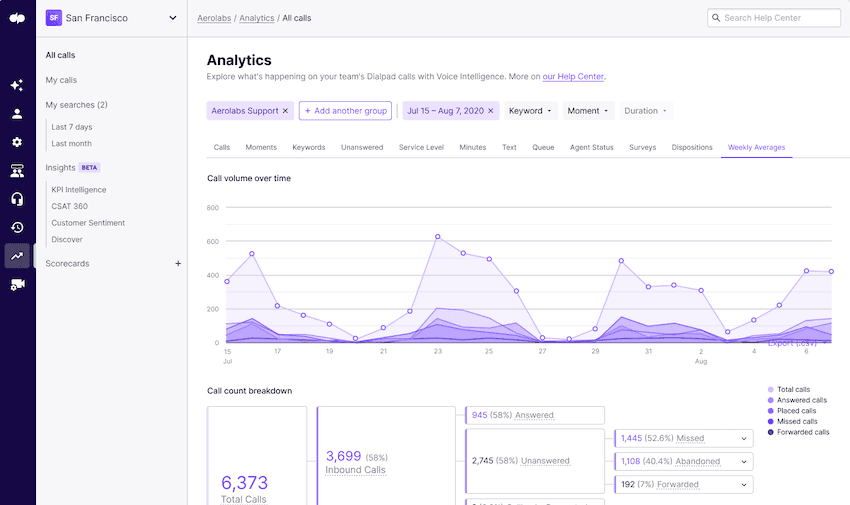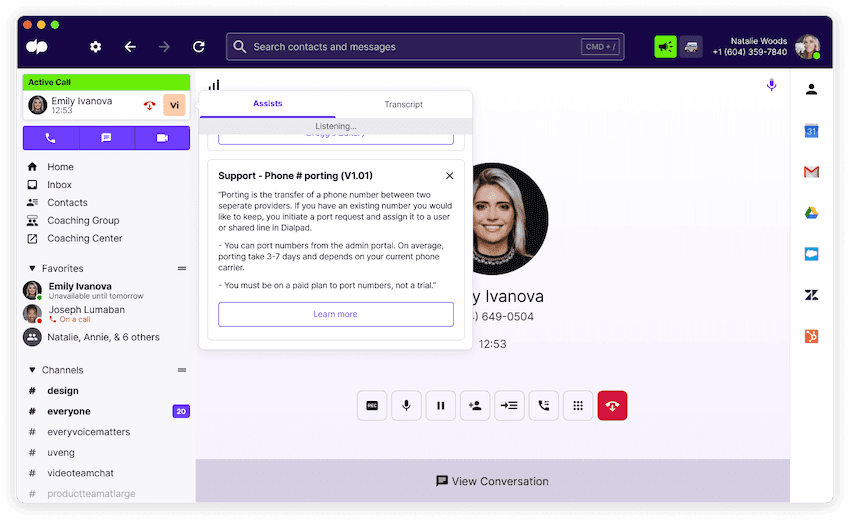What is sales automation? A guide for successful deployment

Sales Enablement Program Manager

Tags
Share
Progress in technology affects every aspect of sales, from how we pitch and do prospecting to how we close deals. And now, with automated systems driven by artificial intelligence, sales teams are able to focus—more than ever before—on the important parts of the sales process.
For both sales and marketing teams, that means less tedious admin work (like data entry) and less wasted time on things that aren’t really that valuable in the grand scheme of things.
So, just what is sales automation? What does it actually look like and what role does it play in the different steps of the sales process?
I’ll walk you through some sales-specific examples of things you can automate to help you (and your reps) accelerate activity and bring more consistency to your process.
So, what is sales automation?
Sales automation is essentially the use of software and technology to reduce the repetitive (and usually manual) tasks involved in your sales process.
By shifting these repetitive sales tasks to automated systems, you reduce the workload on your human staff so that they can focus more on the essential task of closing sales (and ultimately generating revenue).
But what are the actual processes you can consider handing off to automation, though?
Follow-ups. These are essential. Fail to follow up in a timely fashion, and you could be losing a lot of potential sales. By automating the process, your sales team will be prompted to reach out again to those prospects (instead of relying on human memory, which isn’t always reliable).
Pipeline updates. Sales pipelines are often complex—but always essential—and everyone should be aware of what the pipeline looks like at all times. By automating updates, you can keep a better eye on where your sales leads are, analyze and do forecasting more accurately, and keep every member of your team up to date on developments.
Training. Automation can even help with onboarding new sales reps. If you’re onboarding 10 or 20 new reps, it’s much harder to spend time with each individual—so leave it to automation (more on that later).
5 areas for sales automation—and the best sales automation tools for each
As a sales leader, there are a few specific areas in the sales process that I’d look to automate first. Six, to be exact.
1. Record creation
One of the most tedious—and time-consuming—administrative tasks in your sales cycle is manually inputting the data you collect from phone calls, website forms, and emails.
Collecting that data is essential, however, since it’s a must-have for any sales professional and provides important information about previous interactions, buyer personas, and past purchases.
Having an automated system that collects contact information, transcripts of sales calls, and other details can help reps build a good sales call plan and save them a ton of time. They won’t have to type notes and log all that information after every call with a new prospect—your software can automatically add those records to your CRM, all without your reps having to lift a finger.
For example, HubSpot integrates with Dialpad to automatically log records for customers or potential customers:

2. Data entry (activity logging)
Logging sales activities is something that’s usually done manually—and data entry is, again, one of those things that leaves you with less time to do other more impactful things. If you can take this one thing off your sales team’s plates, it can give them back a lot of time.
Dialpad integrates with many popular CRMs like Salesforce, HubSpot, and Zoho to automatically log your sellers’ activities in the CRM. For example, when a rep makes a call or sends a text message through Dialpad, that’s automatically logged in, say, Salesforce.
Not only can automation massively reduce the likelihood of human error, it can also speed up your workflows and make your team more efficient.
3. Outbound efforts
Outreach is a key part of many sales teams’ jobs—and phone calls are of course a big component of that. There are other forms of outreach like email and social media or LinkedIn messaging, but phone calls in particular can be a huge time suck if you’re not careful.
This is where a power dialer can be helpful. For example, Dialpad’s integration with Salesforce can embed a CTI dialer right into your Salesforce window, which makes high-volume outreach efforts much faster:

4. Communications
Your sales reps may be communicating across multiple platforms—and to multiple prospects. How can you keep track of all these messages, phone calls, and voicemails? Automation, of course.
For example, the Outreach integration with Dialpad lets you automate all your communications, from text messages to phone calls to email sequences and manage everything in one place. That lets sellers cover every touchpoint from initial contact to onboarding without the headache of doing it manually in different sales apps.
And if your reps are on the phones a lot and leave a large number of voicemails, you can help them save time here too. With Dialpad’s voicemail drop feature, reps can automate their voicemails by pre-recording those messages and dropping them into the call instead of having to say the message every single time. For high-volume teams, this could save hours every week.
5. Onboarding and post-sales
When that prospect is finally ready to say “yes,” the second part of their journey begins.
Onboarding them and providing follow-ups and good after-sales service and response times is a huge part of increasing customer retention and each customer’s lifetime value. Some Customer Success teams report into Sales, which makes sense because they’re essentially performing a sales function, and for these folks, some form of post-call automation is useful.
By this I mean important information (like call transcriptions, summaries, and action items) that let you know exactly what needs to be done after the call. With Dialpad, we can add action items while we’re in an online meeting, and these would be included in the post-call summary email that gets sent to everyone. It’s great because it streamlines our workflows in one easy-to-access place:

Types of sales automation software for managers and reps
Of course, you have multiple processes in place for your sales funnels and how you do business. What areas should you be considering automating?
1. Lead scoring
Depending on the size and nature of your business, you may have hundreds or even thousands of prospective leads. How do you decide which ones you shift from any targeted marketing to more “hands on” attention from your sales team?
This is where automated lead scoring and lead management via a sales automation platform comes into play. Every one of your potential customers is assigned a “score” that’s based on all the interactions they’ve had at your various touchpoints (think of things like phone calls, email marketing, and LinkedIn messages).
When you automate your lead scoring, you streamline the qualifying process and make it easier for your sales team to know when to communicate with those high-scoring qualified leads who are more likely to be ready to make a final decision.
2. Reporting
Reporting on sales activities is the business equivalent of your least-favorite housework task. The one that nobody wants to do. Collecting data, analyzing it, then formulating strategies based on what you found is crucial to progress. But it can also be very time-consuming.
The thing is, reporting is very important for performance management and coaching—and automation can make it easier to derive business-driven decisions and outcomes. How long are reps spending on calls? What’s their win rate? Which objections are tripping your team up the most?
Analytics can happen in real time, too. For example, Dialpad Ai can give you real-time insights into things like sentiment trends in calls and how frequently certain topics are coming up in prospect conversations (e.g. how often are your competitors’ names coming up?):

This level of sales call reporting is not only great for sales managers, it’s also useful for training and coaching new sales representatives to become self-sufficient and results-oriented.
3. Sales collateral repository / coaching
I mentioned earlier that it’s possible to automate sales training. Let’s look at how to do it. For many managers, overseeing a team of five or 10 or even 20 reps isn’t uncommon. But how can you make sure that everyone has the learning materials they need?
A good rule of thumb is to “automate” that process by simply having collateral in a central location that can be easily and quickly accessed. This lets your team answer questions, give information, and signpost to other sources more quickly. A few examples of the sort of collateral you should have:
Buyer personas
Product info
White papers, research, and case studies
Sales and call scripts (including common objections and how to overcome them)
One cool thing we can do in Dialpad is create “playlists” of good calls with potential customers that we think would be good learning materials. This way, team members can listen to the playlist on their own time and learn whenever they want:

We also have RTA (Real-time Assist) Cards that we can customize for different topics. For example, if I’m noticing that new reps are having trouble talking about pricing, I can create an RTA card with information about pricing plans and tips for how to talk about each one—and set that card to trigger on a rep’s screen when the word “price” or “cost” comes up on a call!

4. Email automation
Even in this advanced digital age, sales email campaigns are still a crucial tool for business. In 2020, the average open rate was 18% and the average CTR (click-through rate) was 2.6%.
Your emails cover not only your marketing but other areas, including after-sales service and customer surveys. With a projected 319.6 billion emails sent every day, that’s a lot of work.
Emails are perhaps one of the most obvious areas for automation. Using an automated service such as Outreach means you can personalize templates and send thousands of emails, without the repetitiveness of manual tasks.
5. CRM
Unless your organization sells extremely high value or high ACV products with a super small TAM (total addressable market), the likelihood is that your salespeople could be handling tens or hundreds of new leads per month.
And even though a CRM (customer relationship management) software isn’t technically an “automation” tool, you’ll need one regardless if you’re working on a sales team—and ideally it should integrate with those automation tools and other sales tools.
For example, Salesforce lets you keep an eye on your sales funnel but isn’t really classified as an automation tool—but can automate things like activity logging and data entry… Clear as mud? Yeah...
The challenges of sales automation (and how to overcome them)
Of course, making a switch to any type of new system will always come with a set of challenges. (And you should never focus so much on automation that you neglect customer satisfaction.) Here are a few challenges that sales automations might present you with.
A steep learning curve
Automating your processes is nothing like the movies. You don’t flick a switch or turn on your robot and have instant results and success. As with many things, there is a learning curve that may be gradual—or swift—depending on how you approach it.
There are a few things to think about to help you adjust to any learning curve:
Sharpen your knowledge. Audit your and your team’s knowledge, identify any gaps, and put learning in place (possibly via online webinars or similar).
Understand the field. Look at each part of your sales funnel and learn how automation works for that part, and your overall systems and processes.
Train meticulously. Identify the tools you are going to invest in and look at what training options are available. Many providers will offer some training as well as support.
Start slowly. Start small and gradually scale so you can build confidence in applying your new skills and tools to real life situations.
Monitor and analyze. Collect all the relevant data and metrics from reports and analyze it to see how each part of your new automated processes are working.
Integrating with your existing workflow
The last thing you want is major interruptions to your existing workflows. Identifying the best tactics to integrate any new tools with those workflows is a major factor in your journey to successful implementation.
Your team may still use some tools that have limited functionality for your workflow, but that suit their needs better than other options. Where possible, you should look for a catch-all automation solution that easily integrates and offers cross-platform connectivity that can bring together all your different systems from across your organization.
No all-in-one solution fits all
There has to be an element of context to the automation solutions you choose. What works for another sales org may not work for yours. (Though it seems like one thing that most people can agree on is that generally, chatbot experiences suck.)
Some teams need to automate lead generation specifically, while others might find that they’re spending too much time pulling reports manually. Even within sales organizations, there’s a ton of nuance of different things you can automate. Not every team can just follow the same playbook. (If only it were that easy.)
How to get your C-suite to board the sales automation train
Any sales manager will have been here before: you have an idea that will improve the business but meet some resistance from some of your senior management.
To sell your boss on sales automation, you need to show them how exactly a certain tool will solve particular issues or improve your bottom line (especially important if you’re working in a small business with a tight budget).
1. Make the relevant data digestible
Don’t blind them with a never-ending stream of numbers and details that will not inform them.
Make any data you present easy to digest and understandable. Present data that’s relevant to your business type and that has solid proof points. Also remember to link the data to what you’re doing now and what you could be doing.
2. Illustrate the relationship between sales and marketing automation
For some members of your C-Suite, what matters to them is the bottom line and your sales figures.
You need to show how each part of any automation can lead to better workflows, better sales productivity and efficiency, and ultimately, better sales. (How much pipe is that drip campaign really driving?)
3. Load up on case studies
Talking a good talk is one thing, but your C-Suite will want to see hard evidenced facts on the benefits of sales automation.
Spend some time researching the different case studies available online and then look closely for ones that resemble your business. You can also ask any contacts who have switched to automation if they can provide any facts and figures.
Ready to take the first step toward sales process automation?
How can you provide a personalized customer experience—while still automating sales tasks strategically so that your team can truly focus on closing deals instead of spending so much time on low-value tasks?
That’s one of the biggest challenges for any sales leader to solve, and if you’re interested in automation, this guide will be a good starting point.
Deciding on what sales automation tool or platforms will play a part in getting to those goals is your second step. One of the beauties of Dialpad is the many integrations you can use to help with these steps. I hope this guide was helpful in getting your sales org started with automation.
Automate the low-value tasks in your sales process and help your sellers close more deals
Take a product tour of Dialpad to see how it can help your reps get more at-bats, more quickly!








